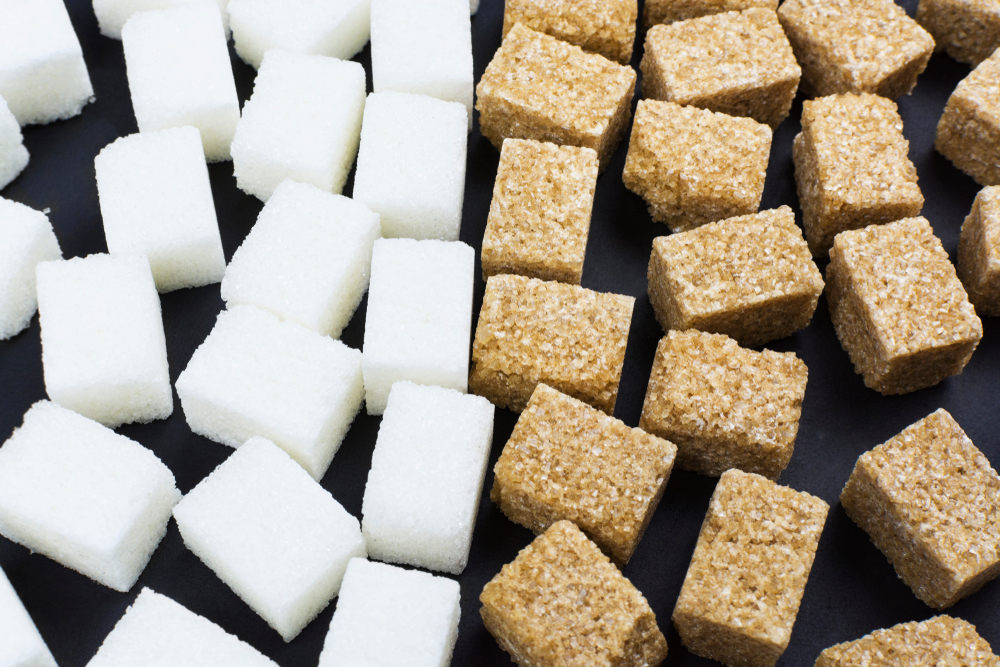People may have a hard time believing that the sugar found in fruit should be considered as part of your total sugar load along with refined sugar, like in candy or added to your cup of coffee. But it should be considered. Sugars in fruit consist of fructose, glucose and sucrose and people can mistakenly ignore their contribution to total sugar loads in the diet. A banana, for example, contains 19 g of sugar. An apple contains 25 g of sugar. (1) Particularly for a child, this is a large amount of sugar. Fruit juice in young children has even been associated with a failure to thrive.(2)
Half of the sugar the average American consumes in a day is fructose, the sugar that is naturally found in fruit, and added to beverages and other foods. (3) Fructose is absorbed directly into the liver and is not readily used for energy by your body’s cells. So it’s converted to fat.(4) Eating too much fructose can be an issue to your body. The excess can promote bacteria in your gut, causing imbalances and overgrowth.(5) Excess fructose can also over stimulate various signals in the gut, leading to metabolic imbalances.(6)
While most diets would significantly improve by removing all foods with added fructose and fruit juices, when looking to improve the health of the overall diet, be aware of how much fruit you consume. Often when people think they’re improving their diets by transitioning to more whole foods, a common pitfall is increasing the amount of sugars through increase in fruits. Many parents proudly state how much grapes and bananas is in their child’s diet as if it’s an indication of a healthy diet. While fruit has the added advantage over refined sugars and fruit juice in that it contains fibers, nutrients, and vitamins – sugar is sugar, regardless of the source.
How can fruit, which we evolved with since ancient times, be detrimental to our health? As in many cases with our food, it’s about moderation. Our ancestors consumed fruit with the seasons. Nowadays we have fruit readily available all year long and most people seek the highest fructose-containing fruits, particularly if addicted to sugar.
The picture above shows how much sugar is in just a handful of grapes. Healthy diets should only have a small amount of fruit and absolutely no refined sugars. Dried fruit is a concentrated sugar food and should be avoided if any fresh or frozen fruit is consumed at all. Commercial fruit juice is not much better than soda with respect to sugar content and lack of nutritional value. The best way to view fruit is as a treat and not to eat right after a big meal. In this way you can best balance metabolism for the simple sugars.
Amanda Holst, a fall nutrition education intern, contributed to this post.
References:
(1) U.S. Food and Drug Administration. “Nutrition Information for Raw Fruits, Vegetables, and Fish”
(2) Smith, Melanie M., and Fima Lifshitz. “Excess fruit juice consumption as a contributing factor in nonorganic failure to thrive.” Pediatrics 93.3 (1994): 438-443.
(3) Basu, Sanjay, et al. “The relationship of sugar to population-level diabetes prevalence: an econometric analysis of repeated cross-sectional data.” PLoS One 8.2 (2013): e57873.
(4) Bray, George A. “How bad is fructose?.” The American journal of clinical nutrition 86.4 (2007): 895-896.
(5) Frazier, Thomas H., John K. DiBaise, and Craig J. McClain. “Gut microbiota, intestinal permeability, obesity-induced inflammation, and liver injury.” Journal of Parenteral and Enteral Nutrition 35.5 suppl (2011): 14S-20S.
(6) Havel, Peter J. “Dietary fructose: implications for dysregulation of energy homeostasis and lipid/carbohydrate metabolism.” Nutrition reviews 63.5 (2005): 133-157.


